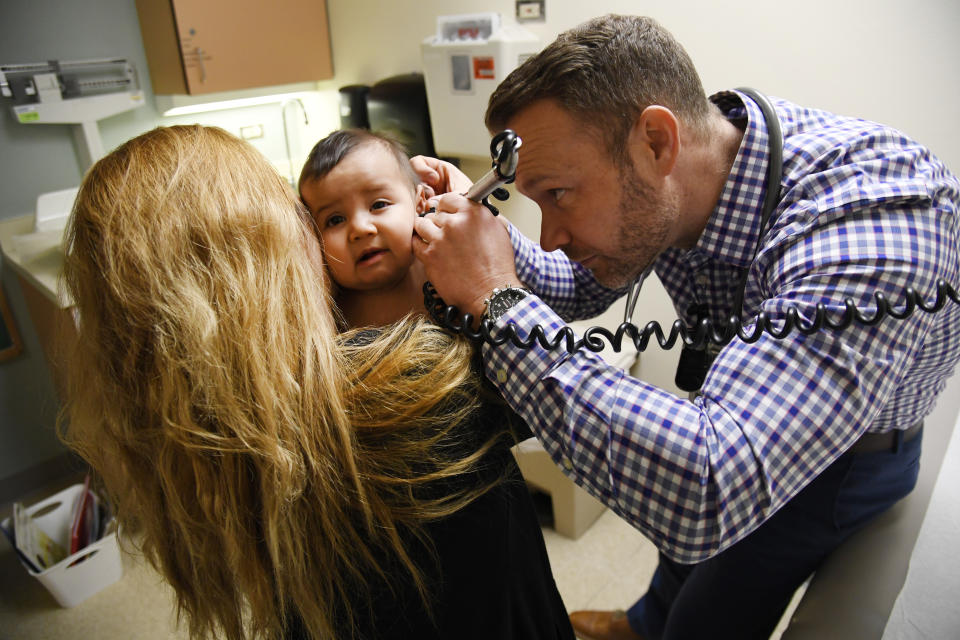How health startup Optinose engineered a 300%+ spike in growth

A broken and costly health care system is in dire need of reform—but one health care startup founder believes a free market should do the job, not the government.
Peter Miller, a former Johnson & Johnson (JNJ) executive and one of the co-founders behind Walgreens’ retail clinics, acknowledged in a recent interview that the current system is ripe for major fixes. Miller now leads Optinose (OPTN), a $400 million market cap company that’s hoping to be a leader in the ears, nose and throat (ENT) space.
Health care reform has become one of the biggest platforms of the 2020 Democratic presidential race, but how to achieve it in a cost-effective manner still an open question.
“Reform is absolutely necessary,” he told Yahoo Finance — even if it adversely affects the future of his company.
“We can’t afford the health care system that we have forever. Even if you say it’s a good system, it’s not affordable,” Miller said.
However, that doesn’t mean the solution has to be government-centric. “Free market systems work if you figure out how to design incentives,” he added.
Leading by example

And incentives are central to Optinose’s strategy, which learned some hard lessons about drug costs during the rollout for Xhance, its nasal spray product.
The patented device delivers a traditional medicine for nasal polyps in a novel way: By blowing air up the nasal passage using a mouthpiece. Yet Miller acknowledged his company “didn’t get everything right” on its first try.
Optinose initially began with a patient assistance program that gave the product away for free to the majority of its patients. After rolling back that incentive, there was significant drop-off in patient adoption — despite having at least 65% of health plans covering the product.
“We designed our program based on what patients told us they were willing to pay (out of pocket),” Miller said. “So what did we miss, what happened here?” the executive asked.
As it happened, patients who weren’t covered or who ran into problems at the counter were calling their doctors to complain. This created a drop in prescriptions written for the nasal spray.
Within three months, however, the company figured out what was going on and did a new round of soliciting physician feedback, to gauge the right approach and get their buy-in.
In a re-tooled version of the program, Optinose unveiled a new pricing structure that eschewed the knee-jerk reaction of giving away more products for free, Miller said.
It now gives the first prescription for free — followed by $30 out of pocket for two-thirds of patients covered, and a maximum of $50 for covered patents, in what doctors considered a “reasonable price” for the product. For those not covered, the maximum out of pocket is $200 per prescription.
From July to September 2018, it saw an aggregate 5% decline. Since then, the company has grown a staggering 364% as the new strategy took root, according to Miller.
‘Get the culture right’
When the company first faced its drop-off from the product pricing, it was facing the struggle many young companies face: could it survive?
Miller credited data and analytics, launched alongside the product to ensure better tracking of market penetration, and a culture of communication.
Without a phone call from one of the regional business managers who figured out that there was a problem, Miller and the company would not have been able to take such swift action, Miller said.
“If you get the culture right, when you’re going sideways…as it was happening, you’ve got people who aren’t afraid to call the CEO,” he said.
Anjalee Khemlani is a reporter at Yahoo Finance. Follow her on Twitter: @AnjKhem
Follow Yahoo Finance on Twitter, Facebook, Instagram, Flipboard, SmartNews, LinkedIn, YouTube, and reddit.
Read the latest financial and business news from Yahoo Finance
